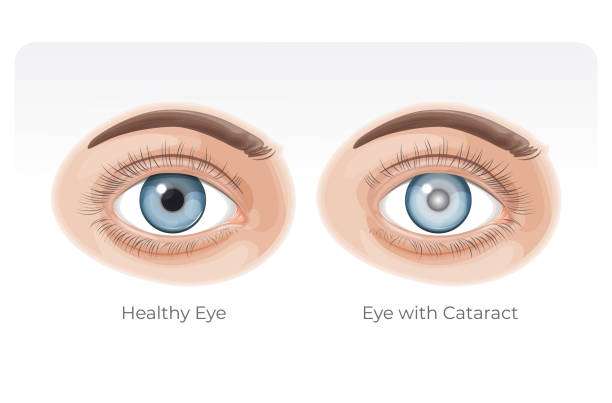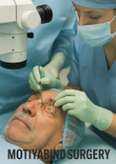Introduction:
This is a common medical procedure performed to treat cataracts, a clouding of the lens in the eye that can lead to vision impairment. This surgery has evolved significantly over the years, becoming a highly effective and safe method for restoring clear vision. In this article, we will delve into the details of how cataract surgery is performed, exploring the various techniques and steps involved.
Understanding Cataracts:
What are Cataracts?
Cataracts occur when the natural lens of the eye becomes cloudy, leading to blurry or impaired vision. They often result from aging but can also be caused by factors like genetics, diabetes, and prolonged exposure to ultraviolet light.

Impact on Vision:
As cataracts develop, they cause vision to become progressively blurred. Additionally, colors appear faded, and glare sensitivity increases. Consequently, tasks like reading, driving, and recognizing faces can become challenging.
Indications for Cataract Surgery:
Visual Impairment:
When cataracts significantly affect daily life and activities, cataract surgery becomes a viable option.
Medical Reasons:
Cataracts that hinder the diagnosis and treatment of other eye conditions may necessitate surgery.
Preparing for Surgery:
Comprehensive Eye Exam:
Before surgery, an ophthalmologist conducts a thorough eye examination to measure the eye’s dimensions (Axial length and keratometry) and plan for the replacement lens.
Choosing the Replacement Lens:
Patients discuss options with their surgeon, choosing a replacement lens (Intraocular lenses) that suits their visual needs and preferences.
Cataract Surgery Procedure:
Anesthesia:
Using local anesthesia, the medical team numbs the eye to ensure the patient’s comfort during the procedure.
Phacoemulsification:
The surgeon creates a tiny incision in the cornea, then uses ultrasound to break the cloudy lens into fragments The medical team suctions out the lens fragments, leaving the natural lens capsule intact.
Intraocular Lens Implantation:
The medical team carefully inserts the replacement lens, referred to as an intraocular lens (IOL), into the lens capsule. The IOL corrects the patient’s vision according to their needs.
Suturing or Self-Sealing:
In most cases, the incision is self-sealing and doesn’t require sutures. This minimizes the risk of infection and speeds up recovery.
Recovery and Aftercare:
Postoperative Care:
Patients receive instructions on using prescribed eye drops, protecting the eye, and attending follow-up appointments to monitor progress.
Visual Recovery:
Vision improvement is noticeable within a few days, but it might take four to six weeks to stabilize completely.
Possible Complications:
Infection:
Like any surgery, there’s a risk of infection, although it’s rare.
Retinal Detachment:
In some cases, the retina might detach post-surgery, requiring further treatment.
Advancements in Cataract Surgery:
Laser-Assisted Cataract Surgery:
Using femtosecond lasers for specific steps like corneal incision, capsulorhexis and nuclear fragmentation can enhance precision during surgery.
Premium IOLs:
Advanced IOLs like multifocal, trifocal and toric IOLs can correct vision issues like presbyopia and astigmatism.
Conclusion:
Cataract surgery is a transformative procedure that restores clear vision to those suffering from cataracts. With modern techniques and advancements, the surgery has become safer and more effective, allowing patients to regain their quality of life.
FAQs about Cataract Surgery:
- Is cataract surgery painful? Cataract surgery is generally painless due to the use of anesthesia and modern surgical techniques.
- After surgery, patients should avoid heavy lifting and strenuous activities for a few weeks, even though they can resume light activities soon after the procedure.
- Surgeons typically prefer to perform surgery on one eye at a time to reduce risks and ensure better recovery, so both eyes cannot be operated on simultaneously. The other eye can be scheduled for surgery after a week.
- Are there any side effects of cataract surgery? While uncommon, some side effects include temporary fluctuations in vision, dry eyes, and seeing halos around lights.
- Insurance usually covers cataract surgery in most cases, but it’s advisable to confirm with your insurance provider before proceeding.












